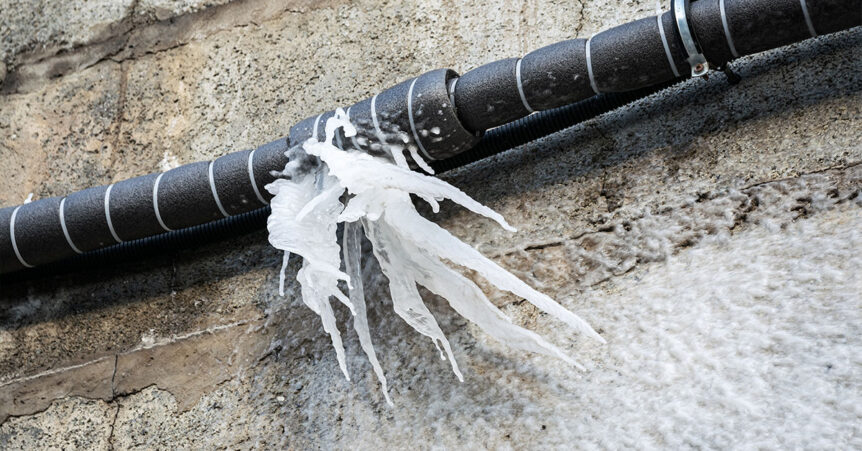- Learn what plumbers advise against when dealing with frozen pipes and toilets. Avoid costly mistakes and keep your Siouxland home safe this winter.
Introduction: The Hidden Dangers of Frozen Plumbing
Frozen pipes and toilets can quickly escalate from a minor inconvenience to a costly disaster if not handled correctly. For homeowners in colder regions such as Siouxland—including Sioux City, South Sioux City, and North Sioux City—understanding how to properly address frozen plumbing is essential.
While it may be tempting to take quick DIY measures to thaw frozen pipes or toilets, plumbers warn that some common “fixes” can actually worsen the problem, leading to bursts, leaks, and expensive repairs.
In this guide, we’ll cover the key mistakes to avoid, safe thawing techniques, and proactive tips to protect your plumbing system during freezing weather.
Why Pipes Freeze and Why It’s Serious
When temperatures drop below freezing, water inside your pipes can turn to ice and expand, putting tremendous pressure on the pipe walls. This expansion can cause pipes to crack or burst—often leading to flooding and structural damage inside your home.
Common trouble spots include:
- Pipes located in unheated areas (basements, crawl spaces, attics, garages)
- Exterior walls or outdoor faucets
- Pipes near windows or poorly insulated walls
Frozen toilets, while less common, can also cause damage if water inside the tank or bowl freezes, leading to cracks and leaks.
What You Should Never Do When Facing Frozen Pipes or Toilets
1. Never Use an Open Flame to Thaw Pipes
One of the most dangerous mistakes is attempting to thaw frozen pipes with an open flame—such as a blowtorch, lighter, or candle. This can cause:
- Fires or burns
- Pipe damage from uneven heating
- Toxic fumes if materials ignite nearby
What Plumbers Recommend Instead: Use safer heat sources like electric heat tapes, hair dryers, or space heaters placed near the pipe (but never directly touching).
2. Don’t Pour Boiling Water on Pipes
Pouring boiling water on frozen pipes might seem like a quick fix, but it can shock the pipes due to rapid temperature change and cause them to crack.
Safe Alternative: Use warm (not boiling) water applied gradually using a cloth or a handheld sprayer to thaw the pipe gently.
3. Avoid Using Electrical Devices Near Standing Water
If frozen pipes burst and cause leaks, it’s critical to avoid using electrical devices near the water to prevent electrical shock.
Tip: Shut off electricity in affected areas and call a professional plumber and electrician if flooding occurs.
4. Never Ignore a Frozen Pipe Thinking It Will Thaw on Its Own
Frozen pipes won’t thaw without external help unless the ambient temperature rises sufficiently. Waiting too long can cause pipes to burst unexpectedly.
Proactive Step: Begin safe thawing as soon as you suspect freezing, especially during extended cold snaps.
5. Don’t Attempt Plumbing Repairs Without Proper Knowledge
Trying to repair burst pipes or cracks without plumbing experience can make matters worse. Temporary fixes may fail, leading to more severe damage.
Professional Help: Contact a licensed plumber immediately if you suspect pipe damage.
6. Never Flush a Frozen Toilet Forcefully
If your toilet is frozen or clogged due to ice buildup, flushing repeatedly or forcefully can cause overflow or damage the bowl and tank.
Recommended Action: Wait for the ice to thaw naturally or carefully warm the tank with a safe heat source.
How to Safely Thaw Frozen Pipes and Toilets
Step 1: Locate the Frozen Section
Look for:
- Frost or ice buildup on pipes
- Lack of water flow from faucets
- Unusual bulges or cracks
Step 2: Open the Faucet
Turn on the faucet connected to the frozen pipe. Running water helps melt ice by relieving pressure and allowing water to flow once thawing begins.
Step 3: Apply Heat Gradually
Use one of these safe methods:
- Hair dryer on low or medium heat
- Electric heat tape wrapped around the pipe
- Portable space heater near the pipe (but not too close)
Step 4: Monitor Progress
Continue applying heat until full water flow is restored. If thawing takes longer than an hour or you notice leaks, stop and call a plumber.
Preventing Frozen Pipes and Toilets: Best Practices for Siouxland Homeowners
Insulate Vulnerable Pipes
- Use foam pipe insulation sleeves or heat tape on pipes in unheated areas
- Seal cracks or openings near pipes to block cold air
Keep Your Home Warm
- Maintain a consistent indoor temperature, even when away
- Open cabinet doors under sinks to allow warm air circulation
Let Faucets Drip During Extreme Cold
Running a small stream of water helps prevent freezing by relieving pressure buildup.
Disconnect and Drain Outdoor Hoses
Before winter, remove garden hoses and drain water from outdoor faucets.
Install Frost-Proof Faucets
For outdoor water sources, upgrade to frost-proof faucets designed to prevent freezing.
What to Do If Pipes Burst Despite Precautions
Turn Off the Main Water Supply Immediately
Locate and shut off your home’s main water valve to stop flooding.
Drain Remaining Water
Open all faucets and flush toilets to empty pipes.
Call A+ Plumbing Right Away
Swift professional intervention can minimize water damage and repair costs.
Why Choosing Professional Help Matters
Experienced plumbers have the tools, knowledge, and training to:
- Diagnose hidden damage from freezing
- Perform safe pipe thawing
- Repair or replace damaged plumbing components
- Advise on winter-proofing your home
Attempting risky DIY fixes not only puts your home at risk but also your safety.
Summary: Protect Your Plumbing This Winter
Frozen pipes and toilets are serious threats in cold climates. Avoid common mistakes like using open flames or boiling water, and follow safe thawing techniques instead.
Siouxland homeowners can safeguard their homes with proper insulation, maintaining warmth, and early action at the first sign of freezing.
When in doubt, don’t hesitate to call the trusted professionals at A+ Plumbing for reliable winter plumbing care and emergency services.

